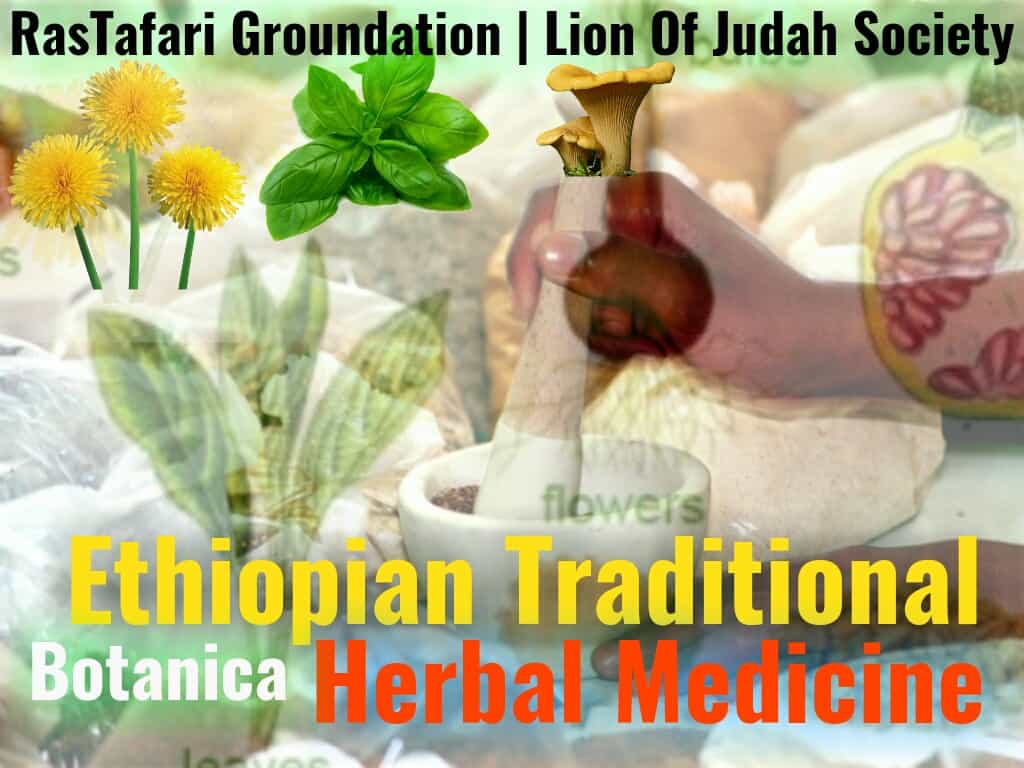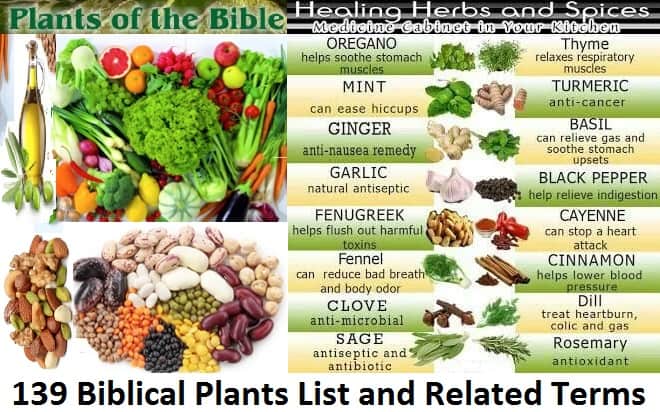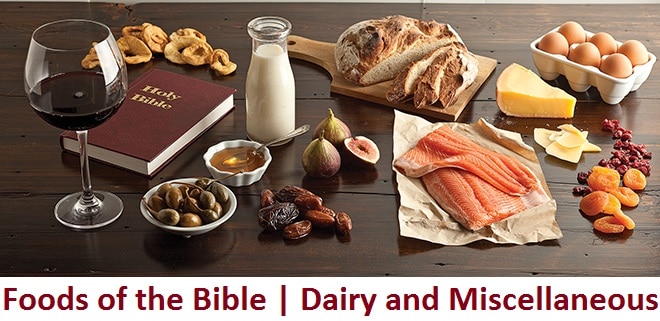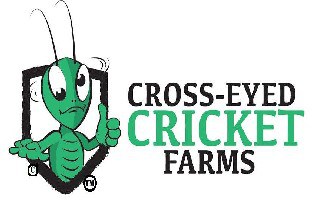52 Wild Plants You Can Eat
 In addition to using the list below as a resource, consider the importance of properly educating yourself before consuming wild plants.
In addition to using the list below as a resource, consider the importance of properly educating yourself before consuming wild plants.
We all know which vegetables and fruits are safe to eat, but what about other wild edibles? Here are a few common North American goodies that are safe to eat if you find yourself stuck in the wild:
1. Blackberries – Rubus fruticosus

Many wild berries are not safe to eat, it’s best to stay away from them. But wild blackberries are 100% safe to eat and easy to recognize. They have red branches that have long thorns similar to a rose, the green leaves are wide and jagged. They are best to find in the spring when their white flowers bloom, they are clustered all around the bush and their flowers have 5 points. The berries ripen around August to September.
2. Dandelions – Taraxacum officinale

The easiest to recognize if the dandelion, in the spring they show their bright yellow buds. You can eat the entire thing raw or cook them to take away the bitterness, usually in the spring they are less bitter. They are packed with Vitamin A and Vitamin C, and beta carotene.
3. Asparagus – Asparagus officinalis

The vegetable that makes your pee smell funny grows in the wild in most of Europe and parts of North Africa, West Asia, and North America. Wild asparagus has a much thinner stalk than the grocery-store variety. It’s a great source of source of vitamin C, thiamine, potassium and vitamin B6. Eat it raw or boil it like you would your asparagus at home.
4. Elderberries – Sambucus

An elderberry shrub can grow easily grow about 10 feet and yield tons of food, their leaf structure is usually 7 main leaves on a long stretched out stem, the leaves are long and round and the leaves themselves have jagged edges. These are easiest to identify in the spring as they blossom white clustered flowers that resembles an umbrella. Mark the spot and harvest the berries when they’re ripe around September.
Elderberries are known for their flu and cold healing properties, you can make jelly from them and are very sweet and delicious. Yet, be aware that elderberries can be toxic if not properly prepared.
5. Gooseberries – Ribes uva-crispa

These are also common in the woods in northern Missouri, the branches are grey and have long red thorns, and the leaves are bright green and have 5 points. They have rounded edges and look similar to the shape of a maple leaf. The flowers in the spring are very odd looking, they are bright red and hang down, the berries ripen around late May early June.
6. Mulberries – Morus

Mulberry leaves have two types, one spade shape and a 5 fingered leaf. Both have pointed edges. The ripe fruit is edible and is widely used in pies, tarts, wines, cordials and tea.
7. Pine – Pinus

There are over a hundred different species of pine. Not only can the food be used as a supply of nourishment but, also can be used for medicinal purposes. Simmer a bowl of water and add some pine needles to make tea. Native americans used to ground up pine to cure skurvy, its rich in vitamin C.
8. Kudzu – Pueraria lobata

Pretty much the entire plant is edible and is also known for medicinal values, such as being an anti-inflammatory and helping in treating headaches and migraines. In developed areas, these plants are often sprayed with herbicides. We were blessed to find this great patch of Kudzu surrounded by Blackberries. The leaves can be eaten raw, steam or boiled. The root can be eaten as well.
9. Daylily – Hemerocallis

You can find this plant in many parts of the country, they have bright orange flowers and foliage that comes straight up from the ground, no stem. You can eat the flower buds before they open, just cook it like a vegetable.
10. Pecans – Carya illinoinensis
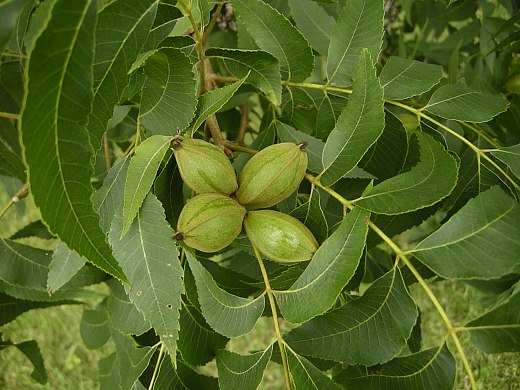
The trees mature around 20-30 ft, some can grow up to 100 ft tall. The leaves are bright green and long, smooth edges and the pecans themselves are grown in green pods and when ripe the pods open and the seeds fall to the ground. The pecan is a species of hickory, native to south-central North America. Pecans, if grown commercially have some of the highest nutrients per acre of any crop.
11. Hazelnuts – Corylus

Hazelnut trees are short and tend to be around 12-20 ft tall, the leaves are bright green and have pointed edges, and the hazelnuts themselves grow in long strands of pods and generally ripen by September and October. They are also known as cobnut or filberts.
12. Walnuts – Juglans regia

Walnut trees are the most recognizable and the tallest nut tree in North America, they can range from 30-130 feet tall. The leaf structure is very similar to the peacan, the leaves are spear like and grow on a long stem 6-8 leaves on both sides. The leaves edges are smooth and green. The walnuts tend to grow in clusters and ripen in the fall.
13. Acorns – Quercus

Acorns, also known as oak nuts, can tend to be bitter, they are highly recognizable. They should be eaten cooked and a limited amount.
14. Hickory Nuts – Carya

Hickory nut trees can grow about 50-60 ft tall, their green leaves are spear like and can grow very large, they have pointed edges. The hickory nut is round and ten to ripen in September or October.
15. Clovers – Trifolium repens

Clovers are everywhere if you’re lucky *pun*, and edible! If you find grass you will most likely see this sprouting everywhere, their distinctive trifoil leafs and white flowers are easy to spot, you can eat them raw but they taste better boiled.
16. Red Clovers – Trifolium pratense
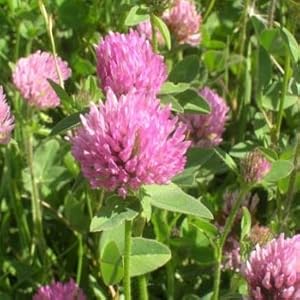
Blossoms can be eaten fresh or steeped in hot water for tea. And you can toss both the green leaves and blossoms into a salad.
17. Chicory – Cichorium intybus

You can find these in Europe, North America and Australia. The entire plant can be eaten along with it bright blue flowers, which can also be white or pink. Chicory is well known for its toxicity to internal parasites.
18. Coltsfoot – Tussilago farfara

Edible parts: Flowers and young leaves can be eaten. Flowers can be eaten raw and mixed into a salad adding a wonderful aromatic flavor. Use the flower head and place them into a glass jar adding raw honey and storing it for a few weeks for its strength; this makes a great home remedy to help calm a cough, or just add some of this coltsfoot honey into your tea. You may dry the flower heads and use them as tea or in cooking/baking recipes. Young leaves are bitter but better after boiled them and then in salads, stews, or just add lemon, extra virgin olive oil and seasoning.
Although coltsfoot is well documented as a natural cough and sore throat remedy, it may be best to avoid prolonged use of the plant or to ensure the supplement you buy is certified and labeled as hepatotoxic pyrrolizidine alkaloid free (PA-free). Hepatotoxic PAs might be carcinogenic and mutagenic and may also increase blood pressure. Certain studies have shown that Coltsfoot tea causes liver problems in infants and pregnant women.
19. Creeping Charlie – Glechoma hederacea

Edible parts: Young leaves can be eaten raw or cooked. The leaves have a mild bitter flavor with a aromatic tang great for salads or jucing. You can cook these young leaves like spinach, or add to soups, stews, and omelet. Tea is made from the fresh or dried leaves. This wild edible has been known to be added to beer in much the same way as hops, for flavor and clarity. This plant is also known as ground-ivy, gill-over-the-ground, alehoof, tunhoof, catsfoot, field balm, and run-away-robin.
20. Cattail – Typha latifolia

Known as cattails or punks in North America and bullrush and reedmace in England, the typha genus of plants is usually found near the edges of freshwater wetlands. Cattails were a staple in the diet of many Native American tribes. Most of a cattail is edible. You can boil or eat raw the rootstock, or rhizomes, of the plant. The rootstock is usually found underground. Make sure to wash off all the mud. The best part of the stem is near the bottom where the plant is mainly white. Either boil or eat the stem raw. Boil the leaves like you would spinach. The corn dog-looking female flower spike can be broken off and eaten like corn on the cob in the early summer when the plant is first developing. It actually has a corn-like taste to it.
21. Garlic Mustard – Alliaria petiolata

Edible parts: Flowers, leaves, roots and seeds. Leaves can be eaten in any season, when the weather gets hot, the leaves will have a taste bitter. Flowers can be chopped and tossed into salads. The roots can be collected in early spring and again in late fall, when no flower stalks are present. Garlic mustard roots taste very spicy somewhat like horseradish…. yummy! In the fall the seed can be collected and eaten.
22. Chickweed – Stellaria media

These usually appear May and July, you can eat the leaves raw or boiled, they’re high in vitamins and minerals!
23. Hop Clover – Trifolium campestre

Edible parts: The flowers, leaves and seeds are edible. All clover types are known to be part of the paleo diet of the First Nations people. Flowers can be put into teas. Seeds (in autumn) can be collected and eaten as is or roasted and can be ground into flour as well. Leaves can be tossed into salads, omelets, juicing, sandwiches, etc.
24. Herb Robert – Geranium Robertianum

Edible parts: The entire plant. Fresh leaves can be used in salads or to make tea. The flower, leaves and root can be dried and stored using it later as a tea or herbs as a nutrient booster. Rubbing fresh leaves on the skin is known to repel mosquitoes, and the entire plant repels rabbits and deer which would compliment and protect your garden.
25. Beach Lovage – Ligusticum scoticum hultenii

Use the leaves raw in salads or salsas, or cooked in soups, with rice, or in mixed cooked greens. Beach lovage can have a strong flavor and is best used as a seasoning, like parsley, rather than eaten on its own. Beach lovage tastes best before flowers appear, and is also called Scotch lovage, sea lovage, wild celery, and petrushki.
26. Plantain – Plantago

Is another one of those plants that seems to thrive right on the edge of gardens and driveways, but it’s also edible. Pick the green, rippled leaves and leave the tall flower stems. Blanch the leaves and sauté with some butter and garlic just as you would with kale or any other tough green.
27. Wild Garlic – Allium vineale

Wild Garlic (Allium vineale, crow garlic or garlic grass) is an herbal treat often found lurking in fields, pastures, forests and disturbed soil. It resembles cultivated garlic or spring onions, but the shoots are often very thin. Use it in sandwiches, salads, pesto or chopped on main courses like scallions.
28. Watercress – Nasturtium officinale

Cresses (Garden cress, water cress, rock cress, pepper cress) are leafy greens with bright white flowers that resemble the shape of a cross long and are cultivated in much of Northern Europe. They have a spicy tang and are great in salads, sandwiches, and soups. Since this is an aquatic plant, it should be washed carefully prior to consumption if it is collected from the wild. If the plant is collected from untreated water it may carry water-born microscopic parasites, such as the protozoan Giardia.
29. Lamb’s Quarters – Chenopodium album

Use the leaves raw in salads, or cooked in soups, in mixed cooked greens, or in any dish that calls for cooking greens. Lamb’s Quarters are susceptible to leaf miners; be careful to harvest plants that are not infested. Although Lamb’s Quarters are best before the flowers appear, if the fresh young tips are continuously harvested, lamb’s quarters can be eaten all summer. Lamb’s Quarters is also called Pigweed, Fat Hen, Goosefoot, and Wild Spinach. Note that some of our readers consider this plant to be a bit of pest.
30. Goosetongue – Plantago macrocarpa

Use the young leaves raw in salads, or cooked in soups, in mixed cooked greens, or in any dish that calls for cooking greens. Goosetongue is best in spring and early summer, before the flowers appear. Goosetongue can be confused with poisonous Arrowgrass, so careful identification is essential. Goosetongue is also called Seashore Plantain.
31. Joe Pye Weed – Eutrochium

Edible parts: The entire plant can be used including the root. The leaves and stems can be harvested in the summer before the flower buds open and can be dried and stored for later use. The roots are harvested in the autumn. Fresh flowers can be used to make an herbal tea.
Joe Pye weed is named after a legendary Indian healer who used a decoction of the plant to cure typhus fever in colonial America. Native tribes used gravel root as a healing tonic included relieving constipation, washing wounds with a strong tea made from the root to prevent infection.
Similar to coltsfoot, Joe Pye weed contains livertoxic PAs which might be carcinogenic.
32. Pigweed – Amaranthus palmeri

Edible parts: The whole plant – leaves, roots, stem, seeds. The Amarath seed is small and very nutritious and easy to harvest, the seed grain is used to make flour for baking uses. Roasting the seeds can enhance the flavor, also you can sprout the raw seeds using them in salads, and in sandwiches, etc. Young leaves can be eaten raw or cooked like spinach, sautéed, etc. Fresh or dried pigweed leaves can be used to make tea.
33. Fireweed – Chamerion angustifolium
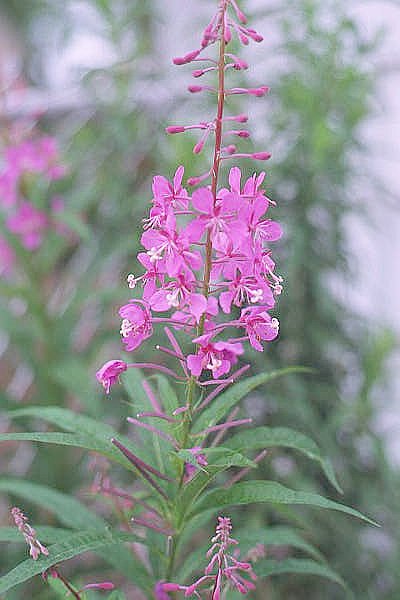
This pretty little plant is found primarily in the Northern Hemisphere. You can identify fireweed by its purple flower and the unique structure of the leaves’ veins; the veins are circular rather than terminating on the edges of the leaves. Several Native American tribes included fireweed in their diet. It’s best eaten young when the leaves are tender. Mature fireweed plants have tough and bitter tasting leaves. You can eat the stalk of the plant as well. The flowers and seeds have a peppery taste. Fireweed is a great source of vitamins A and C.
34. Monkey Flower – Mimulus

Use the leaves raw in salads, or cooked in soups, mixed cooked greens, or any dish that calls for cooking greens. Monkey flower is best before the flowers appear, although the flowers are also edible and are good in salads or as a garnish.
35. Self-heal – Prunella vulgaris

Edible parts: the young leaves and stems can be eaten raw in salads; the whole plant can be boiled and eaten as a potherb; and the aerial parts of the plant can be powdered and brewed in a cold infusion to make a tasty beverage. The plant contains vitamins A, C, and K, as well as flavonoids and rutin. Medicinally, the whole plant is poulticed onto wounds to promote healing. A mouthwash made from an infusion of the whole plant can be used to treat sore throats, thrush and gum infections. Internally, a tea can be used to treat diarrhea and internal bleeding.
36. Shepherd’s Purse – Capsella bursa-pastoris

Use the young leaves raw in salads, or cooked in soups, in mixed cooked greens or in any dish that calls for cooking greens. Although the leaves may be eaten throughout the summer, the mature leaves have a peppery taste that does not appeal to all palates.
37. Common Mallow – Malva neglecta

Edible parts:All parts of the mallow plant are edible — the leaves, the stems, the flowers, the seeds, and the roots (it’s from the roots that cousin Althaea gives the sap that was used for marshmallows). Because it’s a weed that grows plentifully in neglected areas, mallows have been used throughout history as a survival food during times of crop failure or war. Mallows are high in mucilage, a sticky substance that gives them a slightly slimy texture, similar to okra, great in soups. Mallow has a nice pleasant nutty flavor. One of the most popular uses of mallows is as a salad green.
38. Miner’s Lettuce – Claytonia perfoliata

Parts: Flowers, Leaves, Root. Leaves can be eaten raw or cooked. A fairly bland flavor with a mucilaginous texture, it is quite nice in a salad. The young leaves are best, older leaves can turn bitter especially in the summer and if the plant is growing in a hot dry position. Although individual leaves are fairly small, they are produced in abundance and are easily picked. Stalks and flowers can be eaten raw. A nice addition to the salad bowl. Bulb also can be eaten raw. Although very small and labor-intensive to harvest, the boiled and peeled root has the flavor of chestnuts. Another report says that the plant has a fibrous root system so this report seems to be erroneous.
39. Field Pennycress – Thlaspi arvense

Field Pennycress is a weed found in most parts of the world. Its growing season is early spring to late winter. You can eat the seeds and leaves of field pennycress raw or boiled. The only caveat with field pennycress is not to eat it if it’s growing in contaminated soil. Pennycress is a hyperaccumulator of minerals, meaning it sucks up any and all minerals around it. General rule is don’t eat pennycress if it’s growing by the side of the road or is near a Superfund site.
40. Sweet Rocket – Hesperis matronalis

This plant is often mistaken for Phlox. Phlox has five petals, Dame’s Rocket has just four. The flowers, which resemble phlox, are deep lavender, and sometimes pink to white. The plant is part of the mustard family, which also includes radishes, broccoli, cabbage, cauliflower, and, mustard. The plant and flowers are edible, but fairly bitter. The flowers are attractive added to green salads. The young leaves can also be added to your salad greens (for culinary purposes, the leaves should be picked before the plant flowers). The seed can also be sprouted and added to salads. NOTE: It is not the same variety as the herb commonly called Rocket, which is used as a green in salads.
41. Wild Bee Balm – Monarda fistulosa

Edible parts: Leaves boiled for tea, used for seasoning, chewed raw or dried; flowers edible. Wild bee balm tastes like oregano and mint. The taste of bee balm is reminiscent of citrus with soft mingling of lemon and orange. The red flowers have a minty flavor. Any place you use oregano, you can use bee balm blossoms. The leaves and flower petals can also be used in both fruit and regular salads. The leaves taste like the main ingredient in Earl Gray Tea and can be used as a substitute.
42. Mallow – Malvaceae

Mallow is a soft tasty leaf good in fresh salads. Use it like lettuce and other leafy greens. You may find the smaller younger leaves a tad more tender. Toss in salads, or cook as you would other tender greens like spinach. The larger leave can be used for stuffing, like grape leaves. The seed pods are also edible while green and soft before they harden, later turning woody and brown. I hear they can be cooked like a vegetable. I’ve harvested and eaten them raw, and want to try steaming, pickling, fermenting, and preparing like ocra.
43. Pineapple Weed – Matricaria discoidea

Edible parts: Pineapple weed flowers and leaves are a tasty finger food while hiking or toss in salads. Flowers can also be dried out and crushed so that it can be used as flour. As with chamomile, pineapple weed is very good as a tea. Native Americans used a leaf infusion (medicine prepared by steeping flower or leaves in a liquid without boiling) for stomach gas pains and as a laxative.
44. Milk Thistle – Silybum marianum

Milk thistle is most commonly sought for its medicial properties of preventing and repairing liver damage. But most parts of the plants are also edible and tasty. Until recently, it was commonly cultivated in Eurpoean vegetable gardens. Leaves can be de-spined for use as salad greens or sautéed like collard greens; water-soaked stems prepared like asparugus; roots boiled or baked; flower pods used like artichoke heads.
45. Prickly Pear Cactus – Opuntia

Found in the deserts of North America, the prickly pear cactus is a very tasty and nutritional plant that can help you survive the next time you’re stranded in the desert. The fruit of the prickly pear cactus looks like a red or purplish pear. Hence the name. Before eating the plant, carefully remove the small spines on the outer skin or else it will feel like you’re swallowing a porcupine. You can also eat the young stem of the prickly pear cactus. It’s best to boil the stems before eating.
46. Common Mullein – Verbascum thapsus

Edible parts: Leaves and flowers. The flowers are fragrant and taste sweet, the leaves are not fragrant and taste slightly bitter. This plant is best known for a good cup of tea and can be consumed as a regular beverage. Containing vitamins B2, B5, B12, and D, choline, hesperidin, para amino benzoic acid, magnesium, and sulfur, but mullein tea is primarily valued as an effective treatment for coughs and lung disorders.
47. Wild Grape Vine – Ampelocissus acetosa

Edible parts: Grapes and leaves. The ripe grape can be eaten but tastes better after the first frost. Juicing the grapes or making wine is most common. The leaves are also edible. A nutritional mediterranean dish called “dolmades”, made from grape leaves are stuffed with rice, meat and spices. The leaves can be blanched and frozen for use throughout the winter months.
48. Yellow Rocket – Barbarea

It tends to grow in damp places such as hedges, stream banks and waysides and comes into flower from May to August. Yellow Rocket was cultivated in England as an early salad vegetable. It makes a wonderful salad green when young and the greens are also an excellent vegetable if treated kindly. Lightly steam or gently sweat in butter until just wilted. The unopened inflorescences can also be picked and steamed like broccoli.
49. Purslane – Portulaca oleracea

While considered an obnoxious weed in the United States, purslane can provide much needed vitamins and minerals in a wilderness survival situation. Ghandi actually numbered purslane among his favorite foods. It’s a small plant with smooth fat leaves that have a refreshingly sour taste. Purslane grows from the beginning of summer to the start of fall. You can eat purslane raw or boiled. If you’d like to remove the sour taste, boil the leaves before eating.
50. Sheep Sorrel – Rumex acetosella

Sheep sorrel is native to Europe and Asia but has been naturalized in North America. It’s a common weed in fields, grasslands, and woodlands. It flourishes in highly acidic soil. Sheep sorrel has a tall, reddish stem and can reach heights of 18 inches. Sheep sorrel contains oxalates and shouldn’t be eaten in large quantities. You can eat the leaves raw. They have a nice tart, almost lemony flavor.
51. Wild Mustard – Brassica campestris

Wild mustard is found in the wild in many parts of the world. It blooms between February and March. You can eat all parts of the plant- seeds, flowers, and leaves.
52. Wood Sorrel – Oxalis

You’ll find wood sorrel in all parts of the world; species diversity is particularly rich in South America. Humans have used wood sorrel for food and medicine for millennia. The Kiowa Indians chewed on wood sorrel to alleviate thirst, and the Cherokee ate the plant to cure mouth sores. The leaves are a great source of vitamin C. The roots of the wood sorrel can be boiled. They’re starchy and taste a bit like a potato.
Below are some resources to consider:
Stalking the Wild Asparagus and Stalking The Healthful Herbs by Euell Gibbons
Edible Wild Plants by John Kallas Ph.D.
Wild Cards: Edible Wild Foods and The Essential Wild Food Survival Guide by Linda Runyon
Editor’s Note: This list is originally from Suntactics, however, Rastafari Groundation has added important addendums to this information and has corrected some errors. If you have any additional insight to share, please do so in the comments section below, and we can assemble another version of this article once more input is taken.
~~ Help Rastafari Groundation to raise the vibration by sharing this article with friends and family…


